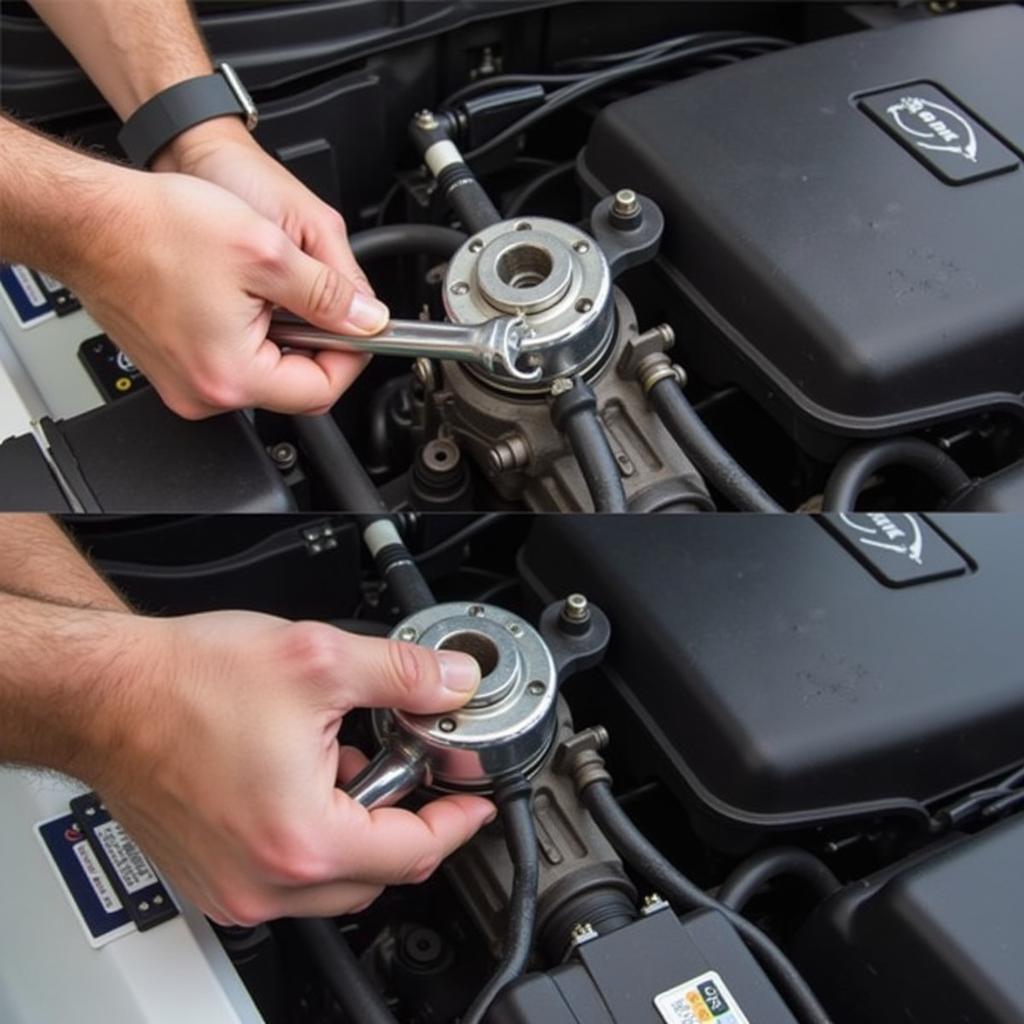Your car refuses to start, even after a jump start? This is a frustrating situation, but don’t panic. “Car not starting even with jumper cables” often points to a more complex issue than just a dead battery. This guide will walk you through the possible causes and solutions, helping you get back on the road as quickly as possible. We’ll cover everything from simple checks to more advanced diagnostics, equipping you with the knowledge to troubleshoot effectively.
If your car won’t start with jumper cables, a dead battery might not be the only culprit. Sometimes, even with a boost, the car simply won’t turn over. This can indicate problems ranging from a faulty starter motor to corroded battery terminals. Understanding the various components involved in starting your car is crucial to identifying the root of the problem. For example, you might need to explore issues related to a charge warning light, as explained in our guide on a charge warning light and brake light on car wont start.
Common Reasons Why Your Car Won’t Start With Jumper Cables
Several factors can contribute to your car’s starting woes, even after attempting a jump. Let’s break down some of the most common culprits.
Dead Battery (Beyond a Simple Charge)
While a dead battery is the most obvious reason, a jump start should typically get your car going, at least temporarily. If it doesn’t, the battery might be completely sulfated, meaning it’s reached the end of its lifespan and can no longer hold a charge.
Faulty Starter
A failing starter motor is a frequent cause of a car not starting, even with jumper cables. The starter relies on the battery’s power to crank the engine. If it’s malfunctioning, it won’t engage even with a power boost.
Corroded Battery Terminals
Corrosion on your battery terminals can impede the flow of electricity, preventing the jump start from being effective. This is a relatively easy fix, but it’s often overlooked.
Bad Alternator
While a bad alternator won’t prevent a jump start initially, your car won’t stay running. The alternator’s role is to recharge the battery while the engine is running. If it’s faulty, the battery won’t receive the necessary charge, leading to repeated starting issues.
Ignition System Problems
Issues within the ignition system, such as a faulty ignition switch, coil, or distributor, can prevent the engine from firing even with a good battery and starter.
Fuel System Issues
While less common, a fuel pump failure or a clogged fuel filter can also prevent the engine from starting. These problems won’t be directly solved by jump-starting.
Troubleshooting Your Car Starting Problem
Here’s a step-by-step guide to help you diagnose the issue:
- Check the Battery Terminals: Ensure the terminals are clean and free of corrosion. Use a wire brush to clean them if necessary.
- Inspect the Jumper Cables: Make sure the cables are properly connected and in good condition. Damaged cables can prevent the necessary current from flowing.
- Test the Starter: If the battery and cables are fine, try tapping on the starter motor with a wrench while someone tries to start the car. If it starts, the starter is likely faulty. Sometimes, you might experience similar issues with the braking system, leading to a situation where a brake malfunction warning light and car wont start.
- Check the Fuel Gauge: Make sure you have enough fuel in the tank. It may seem obvious, but it’s worth checking.
- Listen for Clicking Sounds: When you turn the key, listen for clicking sounds. Rapid clicking might indicate a starter issue. A single click could suggest a dead battery or a bad connection.
 Checking Car Starter with a Wrench
Checking Car Starter with a Wrench
Seeking Professional Help
If you’ve tried these steps and your car still won’t start, it’s time to seek professional assistance. A qualified technician can perform a more thorough diagnosis using specialized tools. They can also perform remote diagnostics, programming, and software installations to address complex issues. For example, they can help you understand how to start automatic car with dead battery efficiently.
Conclusion
Experiencing a car that won’t start even with jumper cables can be incredibly frustrating. By understanding the potential causes and following the troubleshooting steps outlined in this guide, you can take control of the situation and get your car back on the road. Remember, safety is paramount. If you’re unsure about any step, don’t hesitate to contact a professional. Sometimes, the issue may be related to a drained battery, as discussed in our guide on drained battery car won t start. Or, if you’re dealing with a key fob issue, check out our guide on how to start car without key fob.

